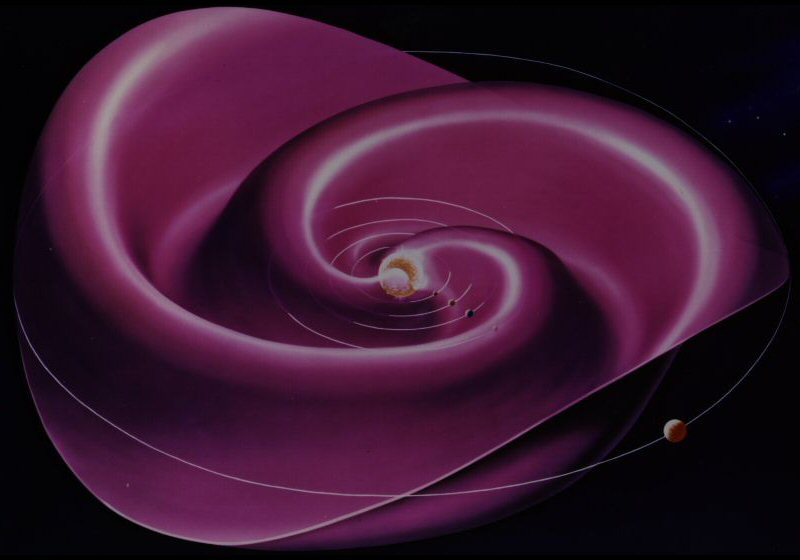A current sheet is an electrical current that is confined to a surface, rather than being spread through a volume of space. Current sheets feature in magnetohydrodynamics (MHD), the study of the behavior of electrically conductive fluids: if an electric current flows through part of the volume of such a fluid, magnetic forces tend to expel it from the fluid, compressing the current into thin layers that pass through the volume.
The largest occurring current sheet in the Solar System is the so-called Heliospheric current sheet, which is about 10,000km thick, and extends from the Sun and out beyond the orbit of Pluto.
In astrophysical plasmas such as the solar corona, current sheets may have an aspect ratio (breadth divided by thickness) as high as 100,000:1 By contrast, the pages of most books have an aspect ratio close to 2000:1. Because current sheets are so thin in comparison to their size, they are often treated as if they have zero thickness; this is a result of the simplifying assumptions of ideal MHD. In reality, no current sheet may be infinitely thin because that would require infinitely fast motion of the charge carriers whose motion causes the current.
Current sheets in plasmas store energy by increasing the energy density of the magnetic field. Many plasma instabilities arise near strong current sheets, which are prone to collapse, causing magnetic reconnection and rapidly releasing the stored energy. This process is the cause of solar flares and is one reason for the difficulty of magnetic confinement fusion, which requires strong electrical currents in a hot plasma.
Magnetic Field of an Infinite Current Sheet
An infinite current sheet can be modelled as an infinite number of parallel wires all carrying the same current. Assuming each wire carries current I, and there are N wires per unit length, the magnetic field can be derived using Ampere’s law:
- \(\oint_{R} \mathbf{B}\cdot\mathbf{ds} = \mu_0 I_{enc}\)
- \(\oint_{R} B ds \cos{\theta} = \mu_0 I_{enc}\)
R is a rectangular loop surrounding the current sheet. In the two sides perpendicular to the sheet, \(\mathbf{B} = 0\) since \(\cos (90) = 0\). In the other two sides, \(\cos (0) = 1\), so if S is one parallel side of the rectangular loop of dimensions L x W, the integral simplifies to:
- \(2\oint_{S} B ds = \mu_0 I_{enc}\)
Since B is constant due to the chosen path, it can be pulled out of the integral:
- \(2B \oint_{S} ds = \mu_0 I_{enc}\)
The integral is evaluated:
- \(2BL = \mu_0 I_{enc}\)
Solving for B, plugging in for Ienc (total current enclosed in path R) as I*N*L, and simplifying:
- \(B = \frac{\mu_0 I_{enc}}{2L}\)
- \(B = \frac{\mu_0 INL}{2L}\)
- \(B = \frac{\mu_0 IN}{2}\)
Notably, the magnetic field strength of an infinite current sheet does not depend on the distance from it.
The direction of B can be found via the right-hand rule.
